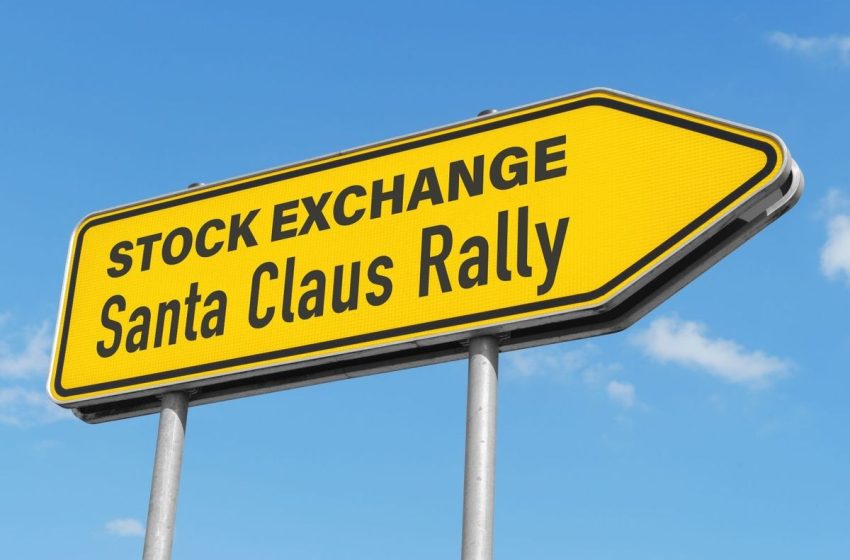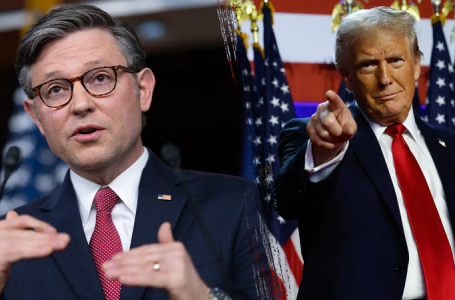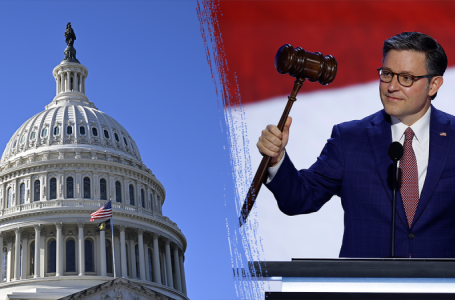Johnson reveals Trump’s wishes on delivering huge policy overhaul in closed-door meeting
What is the Santa Claus Rally and Has it Arrived?

The Santa Claus rally has long been attractive to investors looking to end the year on a high note.
North American markets have already experienced robust growth throughout 2024, but the prospect of a year-end rally could offer one final opportunity for gains before heading into the new year.
The Santa Claus rally is a period between the final trading days of December and the first days of January when stocks tend to climb. While this seasonal uptick isn’t guaranteed, historical data shows that markets rise more often than not during this window, driven by investor optimism, low trading volumes and year-end portfolio adjustments.
This year, with the S&P 500 (INDEXSP:INX) up over 27 percent year-to-date, spurred by significant growth in the technology, energy and financial sectors, investors are closely watching for signs that the rally will materialize once again.
As the holiday season unfolds, market participants are positioning to benefit from a potentially strong finish to 2024.
When does the Santa Claus rally start?
The Santa Claus rally typically occurs over the final five trading days of December and the first two trading days of January. This narrow window often yields modest, yet consistent, returns for investors who time the market correctly.
While the rally’s timeframe is traditionally short, its effects can ripple through the market into early January. Essentially, a strong performance during this period can set the tone for January.
However, the exact timing of the Santa Claus rally can vary. Some analysts suggest that the rally has started earlier in recent years as investors attempt to front run the effect by increasing their positions in mid-December. This shift may blur the lines between the Santa Claus rally and broader December market upswings.
Despite skepticism in some quarters, historical data supports the existence of the Santa Claus rally.
Since 1950, the S&P 500 has averaged a 1.3 percent gain during this period, with a positive performance nearly 80 percent of the time. For its part, the Nasdaq Composite Index (INDEXNASDAQ:.IXIC) has performed even better, averaging gains of 3.1 percent during the same window all the way back to 1971.
This year markets turned down in mid-December, but as of Christmas Eve the Santa Claus rally seems to have arrived — the S&P 500 gained 1.1 percent that day alone, and the Nasdaq Composite Index climbed 1.34 percent.
Is the Santa Claus rally reliable?
While the Santa Claus rally is well documented, not every year delivers the expected results.
Columnist Mark Hulbert has expressed skepticism about the event in the past, noting that there is no definitive evidence that the market consistently outperforms during this period.
“An analysis of the past century reveals that the stock market in the weeks prior to Christmas is no more likely to rally than at other times of the year. (I suggest investors) ignore any arguments based on an alleged Santa Claus Rally,” Hulbert warned in an opinion piece posted on MarketWatch in 2018.
In 2019, for example, the market experienced volatility in December, defying the usual pattern.
Other analysts have a more optimistic perspective. Jamie Cox, managing partner at Harris Financial Group, acknowledges that market reactions to US Federal Reserve decisions often spark volatility.
However, he believes that the recent selloff this year — which was driven by hawkish Fed commentary — could pave the way for a rally as investors return from holiday breaks.
“Markets have a really bad habit of overreacting to Fed policy moves,” Cox explained to TheStreet. “This seems more like, ‘I’m leaving for Christmas break, so I’ll sell and start up next year.’”
Jeffrey Hirsch, editor-in-chief of the Stock Trader’s Almanac, also has a bullish outlook for 2025.
Hirsch, who is the son of Yale Hirsch, the first person to record the Santa Claus rally, emphasized the significance of seasonal patterns, including the Santa Claus rally and the January Barometer.
In his view, if the S&P 500 posts gains in January, the market is likely to maintain positive momentum for the rest of the year. This perspective aligns with the historical analysis outlined in the Stock Trader’s Almanac, which shows the Santa Claus rally occurring approximately 80 percent of the time since 1950.
Despite the varying takes, many investors view the rally as a psychological phenomenon — one that influences market sentiment even if the returns are marginal.
Strategies for the Santa Claus rally
Now that the Santa Claus rally seems to be underway, investors interested in joining in have a variety of options, including domestic markets, international diversification or targeted sector plays such as mega-cap tech stocks.
As always, consulting with a financial advisor and conducting thorough research remains essential. While the Santa Claus rally offers potential rewards, market conditions can shift quickly, making flexibility and prudence key to success.
Securities Disclosure: I, Giann Liguid, hold no direct investment interest in any company mentioned in this article.









